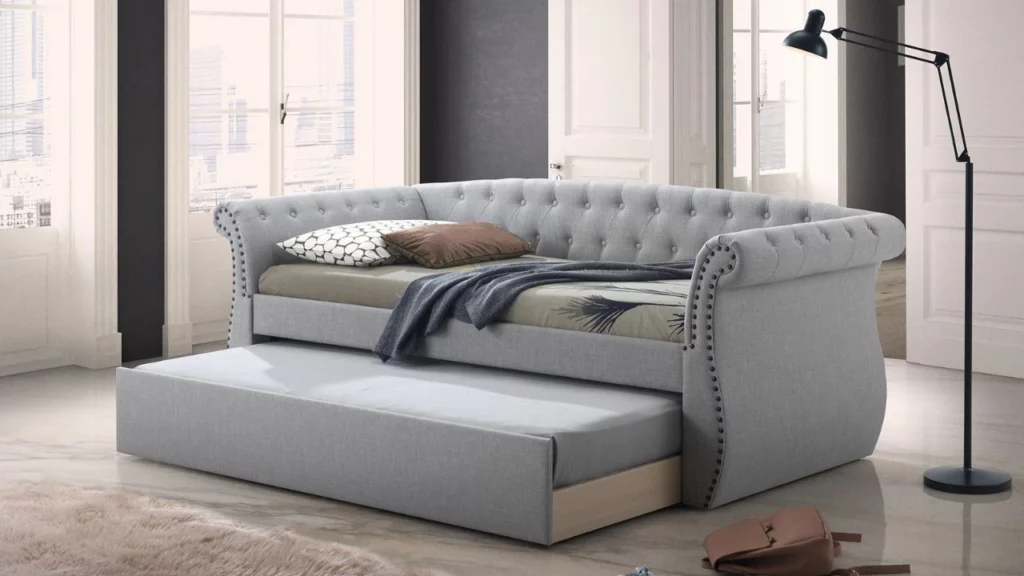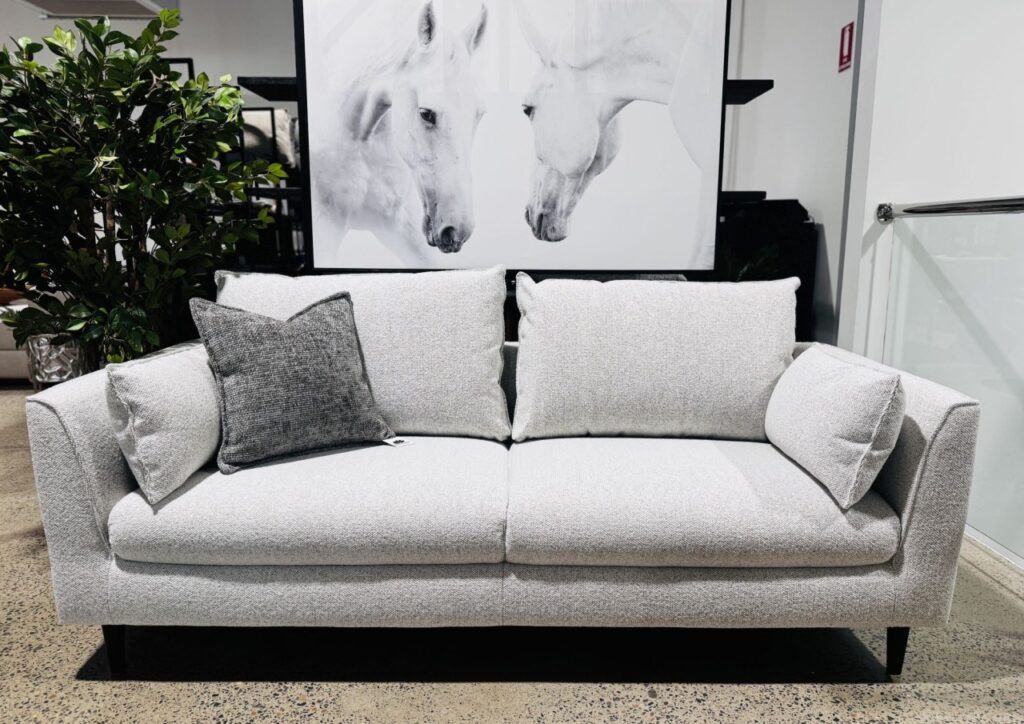In today’s homes, the importance of a functional yet stylish living space cannot be overstated. One versatile piece of furniture that serves this purpose exceptionally well is the sofa bed. In Australia, where space can be limited and comfort paramount, a good sofa bed is a perfect solution for unexpected overnight guests and multifunctional spaces. This article delves into the crucial aspects of sofa beds, including their features, various types, care tips, and a look at the best brands available.
Understanding the importance of a good sofa bed
A quality sofa bed is more than just a piece of furniture; it’s an investment in comfort. With the dual functionality of seating and sleeping, it adds significant value to any living space. This is especially true in smaller apartments or homes where space optimisation is essential. By selecting the right sofa beds australia, you ensure that you do not compromise on style while still providing a comfortable sleeping arrangement.
Furthermore, a sofa bed can seamlessly blend with your interior decor, transforming a room with its aesthetic appeal while serving as a practical solution. Understanding the importance of comfort and design in a sofa bed is the first step in making an informed choice for your home. In addition to its functional benefits, a well-chosen sofa bed can become a focal point of your living area, inviting guests to relax and enjoy their surroundings. The versatility of a sofa bed means it can be used for various purposes, from accommodating overnight visitors to providing a cosy spot for movie nights with family.
Balancing comfort and style in sofa beds
When selecting a sofa bed, it’s essential to strike a balance between comfort and style. A plush bed that is uncomfortable can lead to poor sleep quality, while a stylish design that lacks comfort can make your living room less inviting. Look for sofa beds that have comfortable mattresses and good-quality upholstery, as these will contribute significantly to your overall comfort.
Aesthetically, choose a design that complements your existing furniture. Sofa beds come in a variety of styles, from modern minimalist designs to classic and vintage looks. Whether you prefer a bold colour or subtle tones, the ideal sofa bed should enhance your living space’s overall appeal without overshadowing other decor elements. Moreover, consider the fabric used; materials such as velvet or linen can add a touch of luxury, while leather options might offer a more contemporary feel. The right choice can elevate the entire room, creating an inviting atmosphere that reflects your personal style.

Key features to look for in a sofa bed
Before making a purchase, several key features should be considered to ensure you select the right sofa bed. First, examine the mattress quality. A high-quality mattress is crucial for a comfortable sleep experience. Options include memory foam, innerspring, and latex, each providing different levels of support and comfort.
Another vital feature is the ease of use. Look for mechanisms that allow for easy conversion from sofa to bed. Mechanisms like pull-out systems or click-clack designs are popular for their convenience. Additionally, consider the frame construction; solid wood is often a preferable choice as it lends durability to the entire piece. Beyond these practical considerations, it’s also worth assessing the size of the sofa bed. Ensure it fits well within your space, allowing for easy movement and accessibility. A compact design may be ideal for smaller rooms, while larger models can provide ample seating and sleeping space for gatherings, making them perfect for entertaining guests or family members.
The top sofa bed brands in Australia
With an array of sofa bed options available in Australia, several brands have established themselves as pioneers in combining quality, style, and comfort. These brands have garnered a loyal customer base by prioritising customer satisfaction and product excellence.
When selecting a sofa bed, it’s worthwhile to explore these brands, as they often provide trusted options that balance all the important features discussed earlier.
Comparing Australian sofa bed manufacturers
Several manufacturers stand out in the Australian market for their innovative sofa bed designs. Brands like King Furniture focus on craftsmanship and customisation, allowing customers to select individual fabric and colour options. Others, such as Snooze, pride themselves on comfortable bed solutions and often integrate clever storage solutions.
Moreover, some brands, like Freedom, offer a wide range of styles and price points, catering to diverse customer needs. By comparing these manufacturers, potential buyers can find the ideal sofa bed that meets their personal preferences and budget. In addition to style and functionality, many of these brands are increasingly focusing on sustainability. For instance, some manufacturers are using eco-friendly materials and production processes, appealing to environmentally conscious consumers who wish to make responsible purchasing decisions.
What makes a brand stand out in the sofa bed market
In a competitive market, several factors can differentiate a brand. Quality of materials, excellent customer service, and innovative design play pivotal roles. Brands that invest in high-grade materials tend to produce longer-lasting and more comfortable sofa beds, further enhancing consumer perception of value.
Additionally, after-sales service, such as warranty offerings and customer support, is a crucial aspect that many customers consider when choosing a brand. A brand that prioritises these values often earns a solid reputation and contributes positively to customer experience. Furthermore, many brands are now embracing technology, offering features such as adjustable firmness and built-in USB charging ports, which cater to the modern consumer’s lifestyle. This integration of technology not only enhances the functionality of sofa beds but also reflects a brand’s commitment to innovation and meeting evolving customer needs. Read about why brand management is important to stand out at https://www.waldenu.edu/online-bachelors-programs/bs-in-business-administration/resource/five-reasons-brand-management-is-so-important
The role of materials in sofa bed comfort and style
Material selection is paramount in determining the comfort and aesthetic of any sofa bed. Different materials contribute distinctly to the durability, versatility, and overall appeal of the bed. Understanding these differences can greatly influence your buying decision.
In general, the materials used can impact not just the look but also the longevity of the sofa bed itself, making it a crucial consideration in both style and comfort.
The impact of upholstery choices on comfort
Upholstery plays a significant role in both the comfort and style of a sofa bed. Common options include fabric, leather, and faux leather. Each type offers a unique feel and aesthetic — for instance, leather provides a sleek, modern look while fabric can add warmth and texture to a room.
Beyond aesthetics, the choice of upholstery affects comfort levels. Some materials are softer and more inviting, while others may be more durable yet less plush. It’s essential to consider how the upholstery feels against the skin, especially for those who may use the bed frequently. Moreover, the maintenance of these materials varies significantly; while leather can be wiped clean with ease, fabric may require more regular cleaning to keep it looking fresh. This aspect is particularly important for households with children or pets, where spills and stains are more likely to occur. To learn more about upholstery click here.
How frame materials affect durability and style
The frame is another critical component as it affects the sofa bed’s durability and overall style. Traditional wood frames are celebrated for their strength and long-lasting nature, while metal frames are often lighter and more modern in appearance.
Additionally, the choice of frame material can impact the sofa bed’s design. A well-constructed frame can provide the necessary support for the mattress, ensuring that comfort is maintained over time, while a visually appealing frame style can enhance your interior decor. Furthermore, the finish of the frame can also influence the overall aesthetic; for instance, a polished wooden frame can add a touch of elegance, while a matte metal frame may lend a more industrial feel. It’s worth noting that some modern designs incorporate mixed materials, combining wood and metal to create a striking contrast that can serve as a focal point in any room. This blend not only enhances the visual appeal but also allows for a unique expression of personal style, catering to both traditional and contemporary tastes.
The different types of sofa beds available
The market offers a variety of sofa bed styles designed to fit different preferences and spaces. Understanding these options will help you select the perfect sofa bed tailored to your specific needs.
Different designs cater to specific uses, ensuring that everyone can find something that works for their home environment.
From pull-out to futon: exploring sofa bed designs
Among the most common sofa bed types are the pull-out, futon, and sectional designs. Pull-out sofa beds are traditional and often feature a mattress stored within the sofa frame, providing a straightforward option for guests. Futons, on the other hand, typically consist of a simple frame that converts directly into a bed, making them ideal for modern, minimalist spaces.
Sectional sofa beds offer an enhanced layout, providing both a spacious seating arrangement and a sleeping area. For larger homes or guest rooms, sectional designs can maximise comfort without sacrificing style.

Matching sofa bed types to your needs and space
When choosing a sofa bed, consider your space and how frequently you anticipate using it. If space is a concern, a futon may be better suited as it can double as additional seating without taking up much room. Alternatively, if expecting guests, a pull-out bed may provide the comfort needed for overnight stays.
Ultimately, the goal is to find a solution that fits your lifestyle and home dynamics, ensuring that your chosen sofa bed meets both aesthetic and functional requirements.
How to care for your sofa bed
Caring for your sofa bed will allow it to maintain its comfort and beauty throughout the years. Simple maintenance tasks can extend its lifespan and ensure it remains a valuable part of your living space.
Daily and weekly cleanliness routines can prevent wear and tear, while understanding potential issues can help you deal with them promptly.
Maintenance tips for long-lasting comfort and style
Regular cleaning is essential for maintaining the appearance of your sofa bed. For fabric upholstery, vacuuming is a straightforward way to eliminate dust and debris. Treat stains promptly by using appropriate cleaning solutions, ensuring that your sofa bed looks its best at all times.
On the other hand, leather upholstery can be wiped with a damp cloth and conditioned periodically to preserve its texture and prevent cracking. By following these straightforward maintenance tips, you can ensure that your sofa bed remains a comfortable haven for years to come.
Common sofa bed issues and how to address them
Like any piece of furniture, sofa beds can encounter issues. One common problem is a mattress that sagging or loses its shape. In such cases, consider investing in a mattress topper for enhanced support and comfort.
Additionally, mechanisms may wear out over time. If the opening and closing process becomes difficult, check for obstructions or consider having the mechanism serviced. Being proactive about these issues can prevent them from escalating and provide you with a longer-lasting, more comfortable sofa bed.
In summary, selecting the right sofa bed in Australia means understanding your needs for comfort and style while considering essential features, materials, and design types. With proper care and maintenance, you can ensure that your investment provides lasting satisfaction in your living space.
Related : Where to Buy Affordable Quality Pieces from a Furniture Clearance Outlet in Sydney











